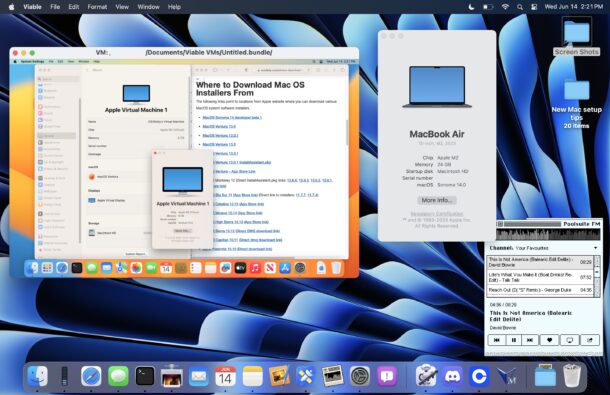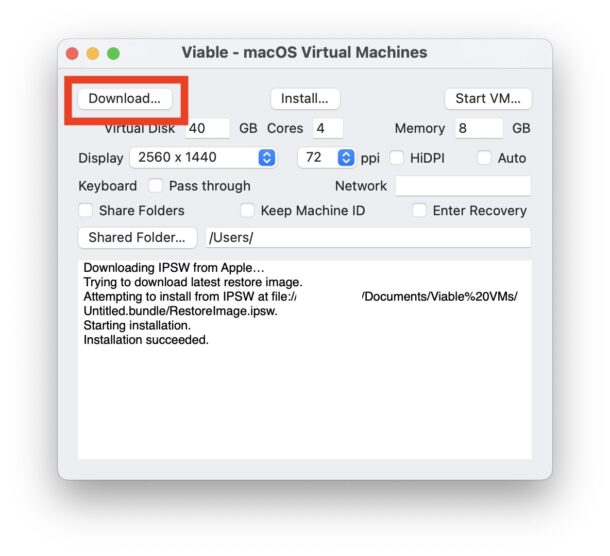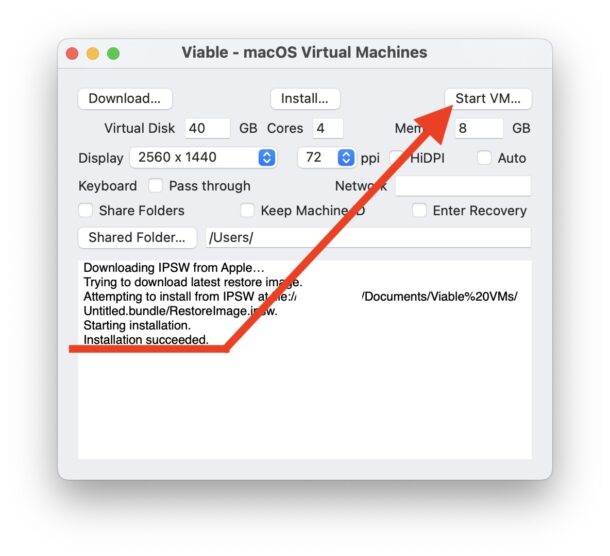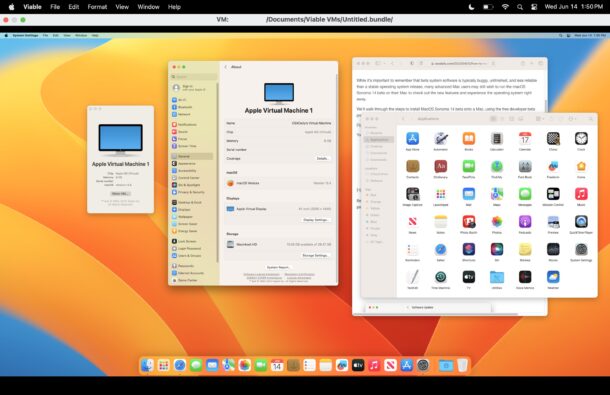How to Run MacOS Ventura in a Virtual Machine with Viable

Running MacOS inside a virtual machine on an Apple Silicon Mac has never been easier, thanks to an excellent and simple to use utility called Viable.
The Viable VM utility was created by Mac developer Howard Oakley, and offers an extremely simple setup process. You’ll have MacOS Ventura running in a virtual machine in mere moments!
Assuming you have an Apple Silicon Mac (M1, M2, etc), sufficient RAM and disk space, (I’d recommend having at least 16GB RAM to run virtual machines comfortably, and at least 60GB of free disk space so that you can allocate at least 30-40GB to the VM and have plenty leftover for swap, caches, and typical uses), you’re ready to go.
How to Install MacOS Ventura in a Virtual Machine with Viable
Here’s all you need to do to get MacOS Ventura running in a virtual machine in moments:
- Go to the Viable page here to access the download, or click this direct download link for viable1b8.zip
- Launch Viable on the Mac
- Adjust settings for the VM as you see fit (recommended to assign the VM 8GB RAM, 30GB virtual disk, or more), and configure the VM display and PPI
- Click on “Download…” to download the latest stable Mac IPSW from Apple (currently MacOS Ventura 13.4)
- When the Viable console reports that “Installation succeeded” you are ready to launch the virtual machine by clicking “Start VM”
- Wait a moment and you’ll soon have MacOS Ventura running in a virtual machine, where you setup and configure the virtual Mac as if it were any other brand new MacOS install



It really is that simple.
You can run the virtual machine in full screen, or drag and shrink the window to a size that works for you.

Performance of the VM is impressively good, at least on this M2 MacBook Air with 24GB RAM.
To turn off the VM, you either shut down directly from the virtualized Mac OS environment, or quit Viable.
As you can see from the launch screen in Viable, there are additional options available, but they aren’t necessary if you simply want to get a MacOS Ventura virtual machine up and running quickly.
You can choose to “Share Folders” with the host MacOS if you want to, I chose not to do that however. I also ignored all of the other options. If you’re curious, the exact settings I landed on for my particular instance look as follows:

I ran MacOS Ventura inside a Viable VM and had it up and running in virtually no time at all, the ease of setup is as simple as can be. I then proceeded to update MacOS Ventura to MacOS Sonoma using this method of installing the MacOS Sonoma beta, and perhaps we’ll cover a variation of that separately for those interested in doing so. You can run MacOS Monterey, MacOS Ventura, and MacOS Sonoma within Viable, you just need the IPSW restore image for that system software version.
Viable is just one of various virtualization options out there for the Mac, some are paid, some are free, and configuring/using them ranges in difficulty from simple as can be like Viable and UTM, to much more complex like what is offered by Apple (which perhaps Viable is based on?). If you just want to get MacOS quickly running in a VM with minimal frills, it’s hard to beat Viable, so give it a try, you certainly do not need to be an advanced Mac user to figure it out or work with it.
Virtualization is a nice, simple, and safe way to run different operating systems, all self-contained and so they do not impact the host computer or installation. We’re obviously covering running MacOS Ventura in a VM here, but if you’re interested in installing and running Windows 11 on an M1/M2 Mac with UTM you can do that too, and check out more virtual machine posts if the topic interests you.


The VM is useless for developers since it will only run the OS
we can’t login to apple id to install xcode or to test our dev
Cool. I like this kind of thing.
I wanted to point out that you can do this with UTM too, also free, which is much more feature rich, and it’s just as easy.
– Open UTM
– Create New VM > Virtualize
– Choose MacOS
– Choose Continue, assign RAM/cores, disk space, then to download the required IPSW
Easy, and it has a much easier to manage system for multiple VMs.
Viable is a neat effort by an indie developer, but if you’re serious about VM’s, use UTM, or Parallels.